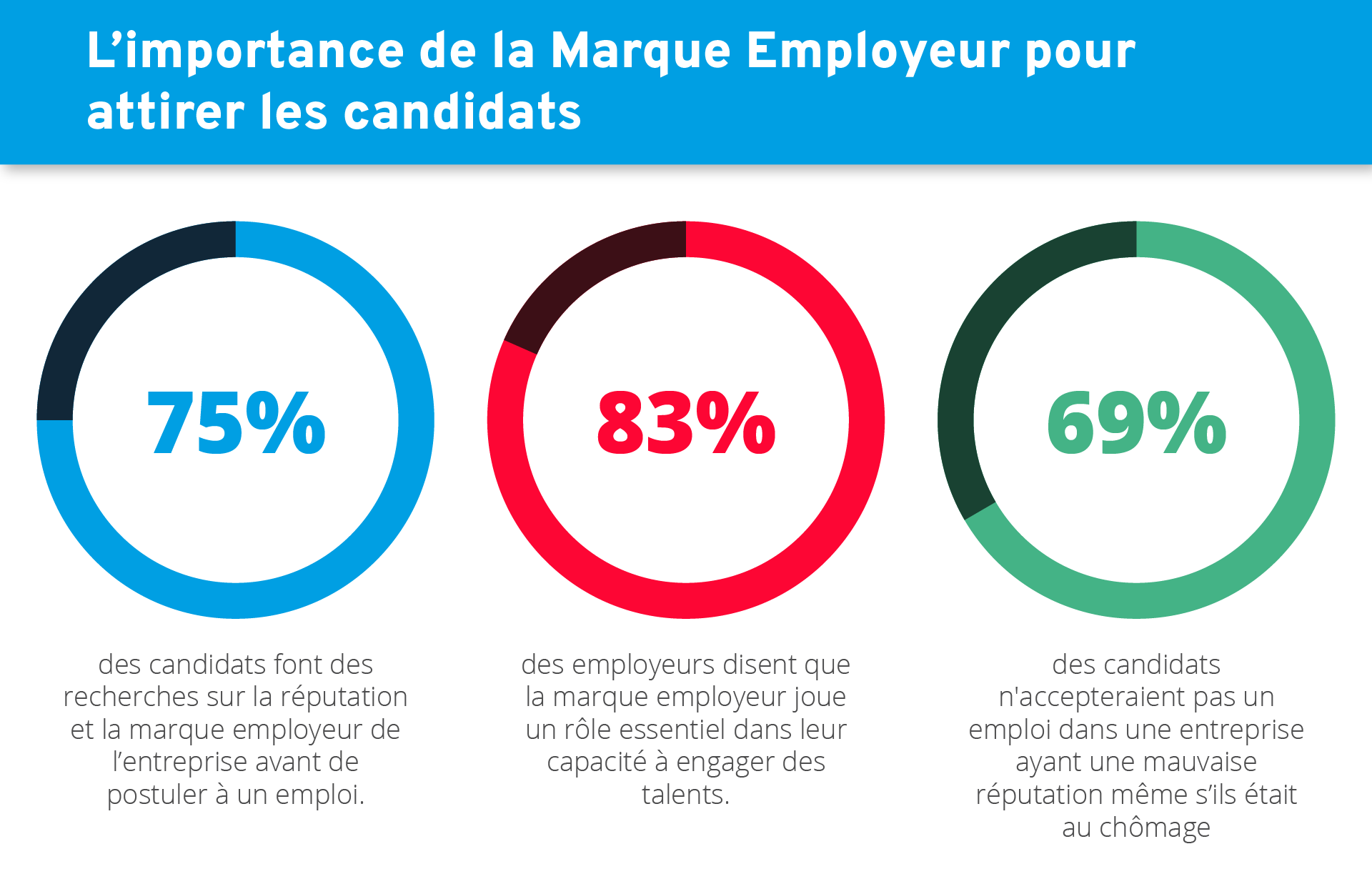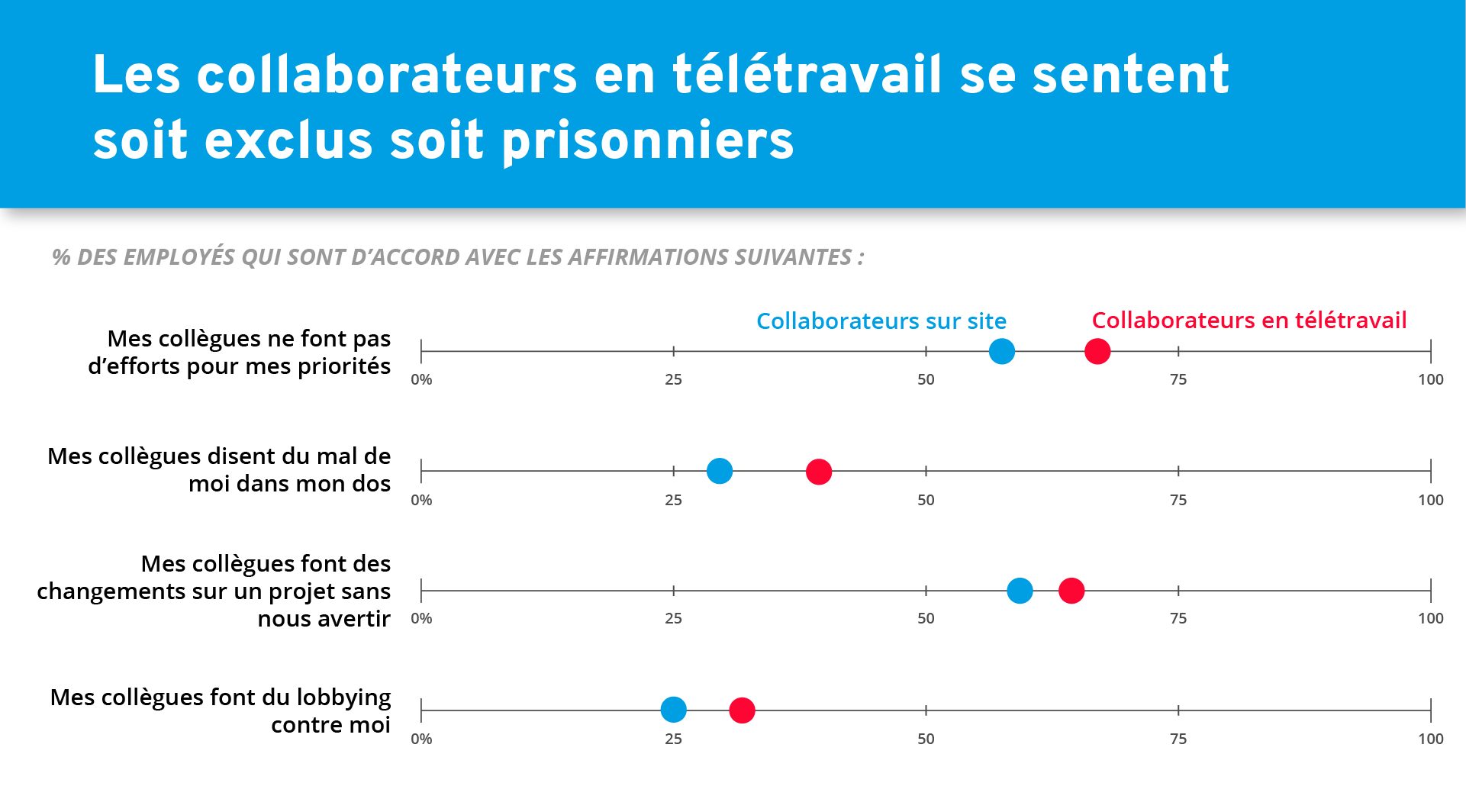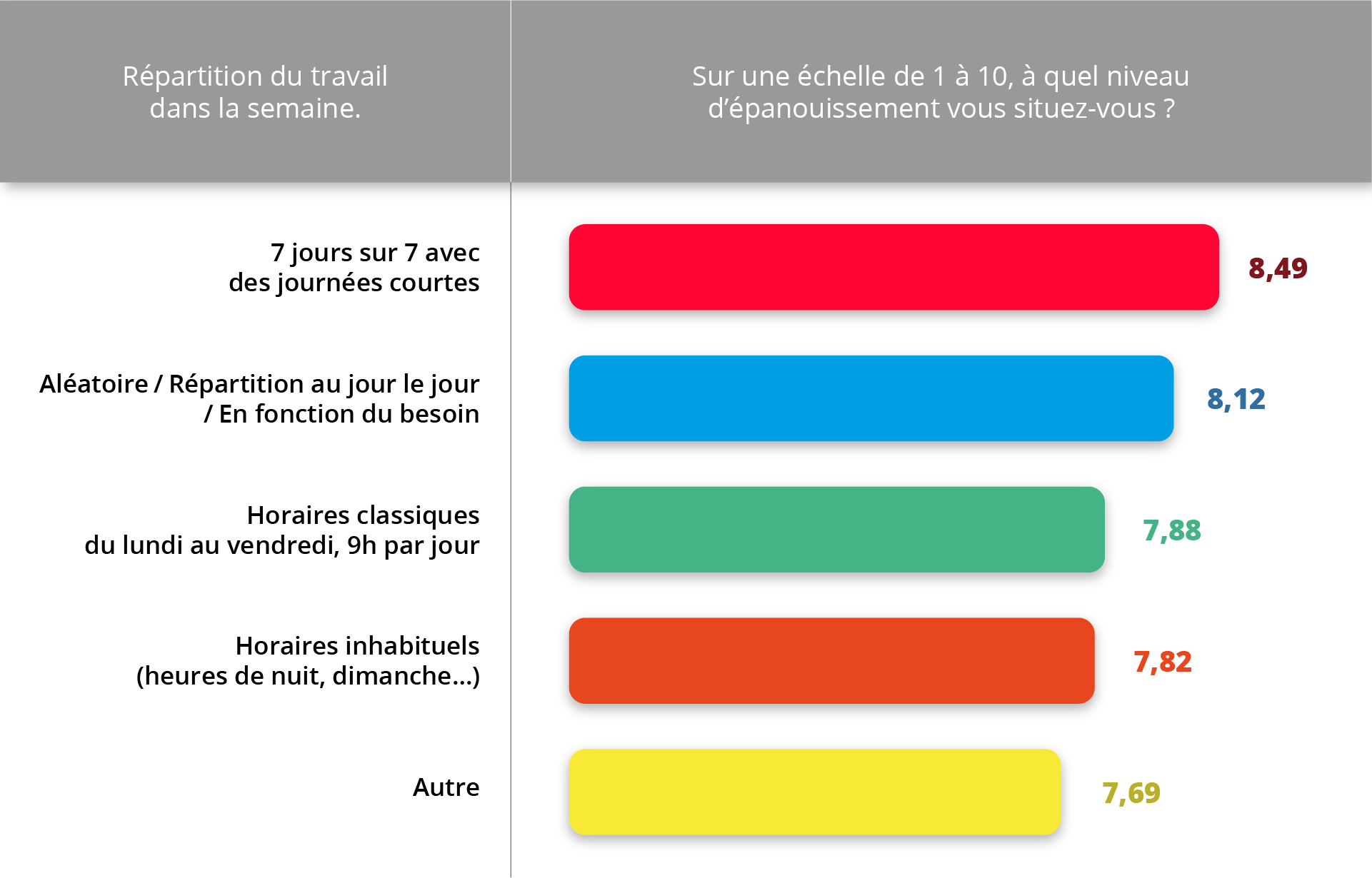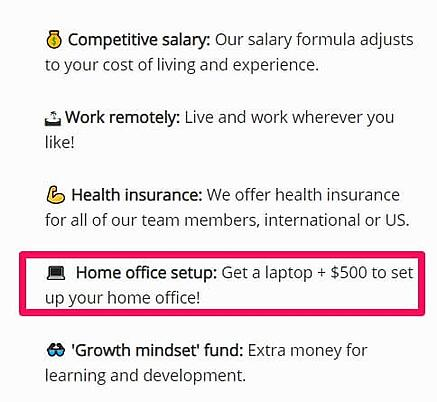As more and more companies encourage remote work, it becomes necessary to integrate this new organizational component into the EVP of companies, as a "as a selling point" considerable Employer Brand.
Everything has changed so fast!
Just a few years ago, we were all debating the pros and cons of remote work.
Many companies as well as employees (let alone labor organizations) were not ready. Some wanted to get started, but gradually, by test and learn, as the marketers say.
As a consequence of the COVID-19 pandemic, instead of slowly moving toward a world of remote work, we were dropped in head first!

With the Covid-19 crisis, telecommuting has gone mainstream
This sudden change has opened up a world of opportunities and a host of problems. If companies can hire from anywhere, talent can also work for any firm in the world.
If you thought standing out as an employer was difficult in your city, wait until you have to compete with the world.
How do you remedy this? By specifically working on your employer brand.
Employer brand matters (more than ever)
Employer branding is fundamental to companies seeking to attract and retain top talent.
In fact, while companies evaluate applicants, the reverse is also true. Applicants and employees also study and compare the most advantageous working conditions. Now, telecommuting is one of those things they consider.
According to a survey, nearly 4 in 5 employees research employers before applying for a job. Nearly 70% will not accept a job from an employer with a bad reputation.
 Employer brand is a differentiator for a candidate
Employer brand is a differentiator for a candidate
That's why agencies spend so much time maintaining their social media profiles and sharing photos from their annual retreats. These images of workplace fulfillment are not for clients but for employees.
As with most things, the pandemic also accelerated this trend. If employer branding mattered before the health crisis, it matters even more now.
Employees have more options: in a telecommuting world, employees are not confined to their geographic neighborhoods when applying for jobs.
People companies are looking for don't just file applications with agencies in the city, they send them all over the world.
A larger pool of employers essentially means that top talent will only head to the most promising workplaces.
Competition has just increased significantly. The old perks no longer apply: a bright, airy office, packed lunches, easy commutes, all standard perks don't work in the telecommuting world.
Remote workers have different concerns than "traditional" office workers: Promotions, employee evaluations, work hours, and even office politics work differently in a remote environment.
The pandemic has disrupted large parts of the world. In these tumultuous times, a strong, reliable brand offers great stability to employees. Knowing that you will be there for them can be a source of comfort, or shall we say stability.
Conclusion: if you hope to attract and retain top remote talent, you will need to invest even more heavily in your employer brand. And along the way, you'll also need to reposition the brand to attract remote workers.
How to create a remote employer brand
Think of any standard pre-pandemic employer branding manual.
Most of them emphasized the same things: a positive work culture, good offices, an assortment of benefits and the promise of working alongside talented colleagues.
Few of these benefits work in a remote work world. Your "office" is now a room in your house, your colleagues are all in one Zoom session, and "lunch breaks" are only 15 minutes in the kitchen.
With respect to your employees working remotely, either permanently or on an ad hoc basis, your employer brand should therefore focus on one thing: providing them with the best possible work experience.
Understanding what remote workers care about
Many people believe that successful remote working essentially results from using the right tools and practices. By finding the right chat or project management tool, you would be well on your way to bringing your employees into remote working nirvana.
Or, that couldn't be farther from the truth.
Remote work is less about tools, training, or even wages, than it is about freedom and choice. While the range of concerns may be broad, some of the fundamental issues that remote workers worry about are:
1 - Freedom
The happiest remote workers are those who had the choice to work remotely.
A survey of remote workers conducted by TINYpulse concluded that workers who had the choice to work remotely were significantly more satisfied with their jobs than workers who were forced to do so.
 Freedom, an essential element in the eyes of teleworkers
Freedom, an essential element in the eyes of teleworkers
This choice manifests itself in small ways, such as being able to choose when and how you work and limiting communication when necessary.
2 - Participation in the workplace
Remote workers are also concerned about workplace culture. If you have staff in the office, remote workers may feel like they are not in the loop when it comes to office politics, promotions and networking.
A survey of 1,100 workers published in Harvard Business Review found the same thing: remote workers felt rejected compared to their in-house counterparts.
 It's essential to include as much as possible of your employees who work remotely distance
It's essential to include as much as possible of your employees who work remotely distance
3 - Engagement
Successful remote work requires a lot of change. You must completely change deeply held beliefs and behaviors around socialization, supervision, motivation, and productivity.
If you are used to going to a colleague's office to discuss an issue (or even last night's game), you will need to completely change your behavior with remote work.
If your employees feel that you are not fully committed to remote work - that it is only a temporary measure in times of crisis - they will have no incentive to learn these new behaviors.
Why should they bother to develop new habits when they know they will eventually return to their old offices?
This is why there can be no half measures in remote work. You have to commit to it fully. Don't just try it for a few weeks, give it an extended run so that people are motivated to learn new behaviors.
Now the question is: How do you address all of these concerns in your employer brand?
6 tips for creating an employer brand that remote workers love.
1 - Give them flexibility on work hours
In a TINYpulse survey, remote workers who were asked to follow standard office hours from 9 to 5 were less happy than their counterparts who were able to work fewer hours per day but spread them out over the week.

Flexible work schedules, an attractive feature
Unless the job requires the employee to be present during regular office hours, give them the freedom to choose their own (reasonable) hours. Some may choose to work all week. Others might choose to have marathon sessions four days a week.
Give them this flexibility and you will easily win their favor.
2 - Reassure them about your ability to manage remotely
As I said earlier, remote work doesn't work when it's done half-heartedly. Remote workers will be reluctant to work for you if they feel that office-based employees will have a head start on career growth and learning.
Mitigate these issues by showing that you work remotely for the long haul.
Here are some ways to do this:
- Describe yourself explicitly as a company "that encourages telecommuting."
- Sponsor remote websites and events.
- Adopt state-of-the-art tools that facilitate remote work.
- Move management to remote sites.
- The latest move can have a significant impact on your "remote usability." If employees know that even management is remote first, they will be assured that their concerns will be heard.
3 - Solve the problem of loneliness
One of the biggest obstacles remote workers face is loneliness. Being locked in a home office five days a week can cause anyone to feel isolated and alone.
Even if you don't interact with them much, sharing a physical office space with others can make you feel included.
In fact, in Buffer's 2019 State of Remote Work Survey, respondents ranked "loneliness" as their second biggest concern.
 Big challenges for a telecommuting employee
Big challenges for a telecommuting employee
This is certainly not an easy problem to solve, but there are several ways to help:
- Encourage remote workers to work in shared spaces such as coworking spaces or coffee shops
- Invest in tools and tactics that encourage more spontaneous conversations such as Slack "watercooler" channels, Zoom workshops, etc.
- Create a stronger sense of camaraderie by investing in team building. Try virtual teambuilding exercises.
- Encourage your employees to be part of different communities (virtual and real). You can even set aside a budget for real-world events such as conferences, meetups, in addition.
4 - Build stronger teams
In a remote company, you'll eventually find yourself in a situation where new employees never even get a chance to meet their colleagues.
You can imagine then why they would be a little hesitant. A big part of teamwork depends on trust. If you've never even met your team in person, how much can you really trust them?
Resolving this issue should be one of your top priorities. Your ability to galvanize your employees into cohesive teams will have a significant impact on your performance as a company.
There is no silver bullet for creating strong remote teams, but all of the standard team building tips still apply. Good communication, strong leadership and dedicated teambuilding activities can help.
5 - Invest in better tools
As a proponent of remote work, your goal should be to create as good an approximation of the office experience as possible. Poor communication doesn't just affect the cohesiveness of your teams, it affects all aspects of your business.
The easiest way to solve this problem is to invest in remote-friendly collaboration tools.
Think of something like project management. A standard PM tool may not have built-in collaboration capabilities. You don't need online discussions when you can just walk down the hall and have an actual conversation.
With a remote team, that's not really possible. So you need a project management tool that allows your employees, for example, to share files quickly and have discussions in one place.
As an extension of this "best tools" policy, give employees the opportunity to choose their own hardware. For example, Buffer, a remote company, gives all new employees the choice of a laptop and $500 to set up their home office.

Think about highlighting what you bring to your employees
6 - Communicate your employee metrics
You may have the best policies for the remote world, but if no one knows about it, you won't be able to attract the talent you want.
So you need to make sure you're talking publicly about your policies to get them in front of as many potential candidates as possible.
Here are some ways to do that:
- Share photos and videos of your virtual workspace on your social media channels
- Talk about your policies on your recruitment page
- Create blog posts about the tools and tactics you use to create more user-friendly remote offices, use key Inbound Marketing tactics to bring the best candidates to you.
- Include details about your key remote work policies (free laptops, flexible hours, etc.) in your job postings.
Creating a remote-friendly employer brand is not an overnight process. It takes time, effort and, most importantly, commitment. If you're going down this road, make sure you're all-in.
The rewards are huge - a truly flexible workplace that can attract the best talent from around the world.







